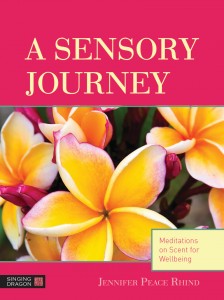For many of us winter, can be a season of contrasts – dark, cold and wet weather that dampens the spirits, or dazzling blue skies with crisp clear air, sparkling frost and snow, which energises and invigorates us. Here, we will take a look at some wonderful scents that we can enjoy throughout the winter, and harness the benefits of aromas which can balance these seasonal contrasts.
During the overcast, cold and damp days when it can feel that it never really becomes light, we can turn to warming aromas of the pungent spices – black pepper, ginger, and turmeric. Traditionally, these are remedies for dyspepsia, nausea, colic and diarrhoea, bronchial congestion, poor peripheral circulation and for joint and muscle pain and inflammation. In contemporary aromatherapy, their essential oils are indicated for the same reasons, and are externally applied and inhaled. For some aromatic seasonal support, these spices can be added to soups, stews and casseroles to add flavour, warmth and character – and don’t forget to enjoy their aromas as you grind, crush and chop, and cook with them, as the preparation processes and cooking heat release the fragrant volatile oils! Additionally, you might like to sniff their essential oils and explore their effects on your senses.
Black pepper oil has a fresh, dry, spicy and woody aroma, (‘dry’ means ‘not sweet’). If you are feeling overwhelmed or fatigued, its scent can warm and invigorate your senses, and impart a feeling of resilience. Ginger essential oil has a pungent, rich, warm and spicy aroma; you will also notice a lemony impression and then woody and green nuances. Ginger has a role in both traditional medicinal and spiritual healing practices, and its fragrance can stimulate the senses, warm the emotions, and clear the mind –ideal for days when you might be feeling the effects of cold and dismal weather! Turmeric is also a member of the ginger family, it has a pungent flavour and yellow colour and its essential oil has a fresh, spicy and slightly woody aroma. Traditionally it is used to purify and protect and you might find that its warm aromatic scent will uplift the spirits and ease you into a mellower frame of mind.
So, how can we reinforce the positive feelings related to the bright, crisp winter weather – which provides such a contrast to these dark and wet days? When the weather is clear and frosty, we can perhaps take a walk in a coniferous wood. We might not, at first, notice the beautiful scents of the trees, partly because our sense of smell can be affected by the cold conditions! A walk in the woods is, in itself, one of the best antidotes to the seasonal blues; however we can also explore the aromas of the coniferous essential oils. There is a vast array of oils to choose, obtained from the needles and twigs, and sometimes cones, of species of pine, fir, spruce and several others. Typically, a coniferous odour is aromatic and woody, but you will find subtle variations. For example, longleaf pine has a harsh, disinfectant-like note, while dwarf pine is sweet, woody and with a balsamic nature (…but it should not be applied to the skin as it can cause irritation). In contrast, Siberian fir is pine-like, sweet, coniferous and fresh, with lemony nuances; balsam fir has a pronounced, sweet coniferous forest scent and grand fir has an orange-like note. However, what these coniferous oils have in common is their effect on the senses. They are excellent for bringing a feeling of freshness into the environment, and for dispelling anxiety and fatigue.
Sniffing and inhaling the aromas of the coniferous oils can also offer some relief from respiratory congestion – they are useful decongestants for the sinuses and bronchial tubes – so here we have another aspect to aromatic winter support. Many essential oils can be very comforting and alleviate some of the symptoms of colds and flu. These are the oils with ‘medicated’ odours, and they often have antimicrobial properties. For example, the well-known eucalyptus oil is rich in a constituent called 1,8-cineole which can help improve blood flow to the brain, and indeed inhalation of its vapours can often relieve headaches. Eucalyptus is best known as an expectorant, and so it helps with respiratory congestion; however, there are some other essential oils that can also be effective. You might like to try cajeput (from Melaleuca cajuputi), niaouli (from M. quinquenervia) or ravintsara (from the Madagascan Cinnamomum camphora leaf). Cajeput, with its pleasant but strong, camphoraceous, sweet odour is regarded as a panacea in its native Malaysia. Niaouli is native to Indonesia, and has a strong, sweet and camphoraceous/eucalyptus odour; in France it is more popular than eucalyptus, and is used in aromatic medicine. Ravintsara essential oil has a fresh, clean, eucalyptus-like scent, and it is not only noted as an expectorant but also as a bronchodilator. Additionally, it is helpful for insomnia, it is an antiviral with tonic and uplifting qualities – and so ravintsara is an excellent choice for helping us through these typical seasonal maladies.
So, this winter, why not harness the therapeutic effects of these scents? Savour the fragrance and flavour of warming spices in your food and drink, walk in the woods and breathe in the clear, invigorating scent, or bring the forest into your home with the branches and twigs of the beautiful conifers. Even this small selection of essential oils can offer so much seasonal support – simply through our sense of smell they act as mood elevators and enhancers – but should you succumb to winter ailments they can also bring comfort and relief.

